. . . but one would need to stay in the cabin
Sunday, Jan 21
No CPAP – Oximetry for Jan 20: SpO2 low 83, 8 events <88% with overall avg., 90.3%. Avg. low SpO2, 87.2%. Pulse avg. 56.8, low 50. Slept 8 hrs 48 min.
I worked on the blog and dishes. John wasted the day away, as usual (his edit, not mine), after doing the normal chores.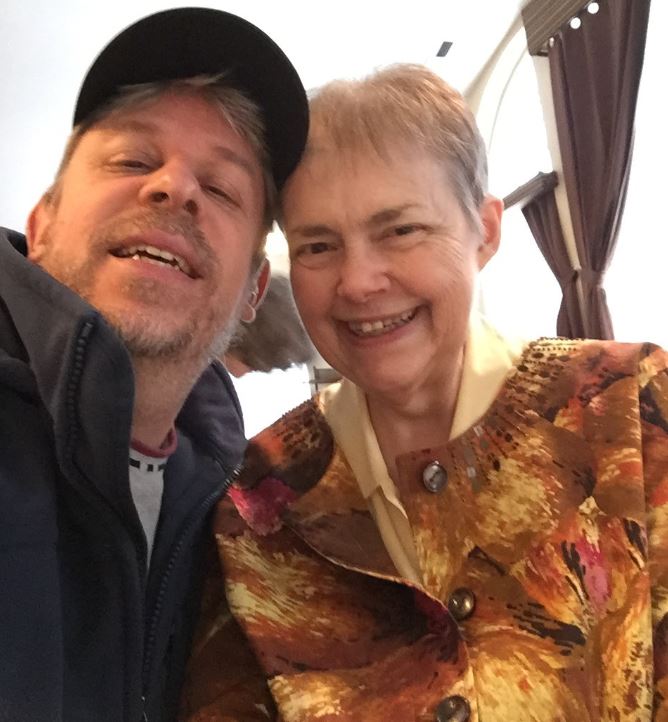 Glenn & Nancy
Glenn & Nancy
Replay, of a photo I forgot to include for our music time and meal at Briarwood, 1/20/18. Anne Engels is our group’s tambourine & Maraca player (on calypso songs), and this is her son, Glenn, with me after we finished playing & eating. He came by to see us (he lives there in the Apt. complex, called the Briarwood Commons). She had texted him we were there. The residents brought him over to me and I stood up and gave him a hug (always do when I see him). He was my student about 15 years ago, and has been a good friend ever since. We had a special relationship during classes, because he is hearing impaired and needed to have “Type Well” transcribers (which happened during the class lectures).
Somehow the gals managed to listen to what I was lecturing, type it, and Glenn would read it on his computer laptop screen. He had to read and also look up at things on the PowerPoint screen. I learned to watch his eyes so I didn’t point to the PowerPoint display of visuals while he was reading and not seeing it. I also had the transcribers email me the complete transcript, so I could read through it to make any corrections of terminology or phrasing that was misleading or different from what I had said. I would return those notes to them and to him, along with a CD with the PowerPoint of the day for him to have at home to see with the notes. Actually, I gave him the PowerPoint the day of the lecture.
His abilities to understand map reading and map interpretation and two GIS (Geographic Information Systems) courses, which were full of computer cartography and technical terms and knowledge, was phenomenal. He took at least 3 computer cartography courses from me that I remember, and probably other of my geography classes. I know he audited John’s and my ending in-classroom “field trip,” which was an educational wine-tasting. We team-taught that class during summers for 6 weeks, taking field trips to vineyards, wineries, and the wine-making facilities, barrel rooms, and related economic & cultural experiences via videos and slides from around the world. To this final meeting, the “type well” gals came with him, providing him the comments we were giving the class. And, he had a setting so he could also experience the tasting as well. We mostly had them sniff, swirl, view, and taste, but spit out most of the wines into containers. We had a couple of stemmed glasses for each person and we evaluated about 14 wines.
We had crackers, dried sausage, and cheese to go along and water, and one student brought a cake for our anniversary (July 12), as a complete surprise to us. We paid for the wine and supplemental food (not the students or the state). The class was a senior one (Geog 465: Wine, A Geographical Appreciation), which graduate students could also take for credit. The class has not been taught since I retired. Another two of my GIS classes (one at the sophomore level and the other at the graduate level) also have not continued being taught. End of a legacy.
Monday, Jan 22
No CPAP – Oximetry for Jan 21: SpO2 low 85, 6 events <88% with overall avg., 92.1%. Avg. low SpO2, 88.5%. Pulse avg. 55.5, low 50. Slept 7 hrs 56 min.
I worked on house chores, music planning, ate, and went to SAIL exercise class and had a good workout, but only 10 minutes of aerobic exercise. Check Wednesday this week. I returned to more computer chores and finished loading the dishwasher. John worked outside some.
Inside, John has had several old phone books and other things under his keyboard and our modem on our counter separating the den and kitchen. He cut a piece of plywood (top of a wood pallet) into an ‘ L-shaped ‘ configuration to replace the mess. Now he as a smooth flat surface (and I a sturdy spot for my coffee cup). It still needs a better top, says John. He used parchment paper as a quick fix, but has material for a better looking and softer surface. Maybe we’ll have a future picture.
Our mail brought more things to be done. John’s Crosstrek’s license tab will expire in Feb.; I’m the one who takes care of those on line. I have to do some paperwork on several other medical issues. Those are continuing.
Tuesday, Jan 23
No Oximetry to report for Jan 22. I have ceased doing it because my SpO2 has been excellent for many months, and yesterday, I received a laser burn on my finger, because I slept so hard all night I never changed it to a different finger as I usually do. One is not supposed to leave it on the same finger for > 2 hrs. Slept 8 hrs.
Snowing big time now after 10. John should have fed the horses earlier when we first got up and he fed the birds and cats.
I’m staying home today to take care of projects that have been ignored for weeks, actually months since July notification of losing the old email address.
This afternoon, I finally cut John’s hair. It took 45 minutes minus a 12-min break to cool the clippers.
On the break, I managed to send out 5 new jobs to the NW Geog. Jobs list I moderate, and I took another break to feed one of the outside cats who didn’t come this morning, and came to the window to meow his wishes. He is the most vocal of all our cats.
Wednesday, Jan 24
Going the FISH Food Bank Soup kitchen for music and on to SAIL at AAC (my FitBit recorded 31 minutes of aerobic exercise!), drove by Carole’s to pick up mics for members of the KV F&F group to attach to instruments, when we are playing outside in the Ellensburg wind (once or twice a year).
On the way to exercise, I stopped at Petsense for some pate canned cat food because we ran out. We were supposed to get it when we last were at Costco, but didn’t. It’s only 47¢/can there, and 49¢ at PS. Getting 24 in a box for $11.76.
Cheryl C. dropped off 4 plastic dinosaurs to me at the AAC for Haley to enjoy playing with and Amy to use in the preschool for a lesson on prehistoric reptiles. I took those by on my way home. They look small and light, but are rather heavy.  Also, I drove by Alder St. to drop off a large coffee can to the mom of a gal on the Buy Nothing East Ellensburg/Kittitas site.
Also, I drove by Alder St. to drop off a large coffee can to the mom of a gal on the Buy Nothing East Ellensburg/Kittitas site.
I heard tonight my months-ago plea is being fulfilled for a toboggan or sled for John to use to move a bale of hay over snow. With snow over 5 or 6 inches, the wheeled cart works not so well. A lady plans to give us a small plastic toboggan and an old child’s sled. Tomorrow I pick it up in town. The owner lives in Cle Elum, but will bring it down. We haven’t seen the sled, guess it looks like an old Radio-Flyer, or Flexible Flyer, or Yankee Clipper, or whatever. More later. John says, after he sees it, he will investigate. Thinks maybe he and Peggy had such a thing.
Thursday, Jan 25
We had an early morning call from the lady with the plastic toboggan and the sled. We arranged for her to drop them off at Seth Motors (car repair place), where we have done business since I arrived in town in 1988. We weren’t scheduled in town until 1:30 today, so she delivered and we picked it up from Chad after the music at Hearthstone.
When I turned on my computer today, I had a new screen shot, of some awesome mountains in Peru.  I never knew of them, so I searched for more information to share with you all. Also known as the Rainbow Mountain, Vinicunca translates to “seven-colored mountain” in the local language (Quechua) spoken in the Cusco region of Peru.
I never knew of them, so I searched for more information to share with you all. Also known as the Rainbow Mountain, Vinicunca translates to “seven-colored mountain” in the local language (Quechua) spoken in the Cusco region of Peru.
The mountains’ colors come from mineral deposits, but they weren’t always easy to see. For years, Vinicunca was hidden under a thick layer of ice.
The first link is a story in Forbes magazine by Elizabeth Johnson, “Why You Should Climb Peru’s Rainbow Mountains Now.” [after clicking on the link below, wait a moment for it to come in]
Next is a YouTube of Rainbow Mountains in Peru, caused by glacial action and the uplift of the Andes. The bedrock is granite and sandstone, and the colors are from minerals deposited in different times of the past, on the sandstone.
The video has a musical background of the long hike or trek in to see them (elevation is over 14,000′). You can hike on foot or use animals provided by tourist guides and local Peruvians. The place is higher than most people can get to and, until recently, required a multi-day hike and camping. Now it is easier, but still short of oxygen. Video
If you’d like to see more EXCELLENT pictures of the local people, sites, and animals along the walk up and what to expect when hiking Rainbow Mountain in Peru, you should visit this: LINK
John and I left a tad before 1:00 and made it to Hearthstone to setup for music, and carry in a couple of items for people there. We had a good turnout of musicians, and a large audience of appreciative residents.
While still in town, we drove by Seth Motors and picked up a plastic sled/toboggan like the blue one, with broken handles (won’t matter loading stuff on to pull over the snow).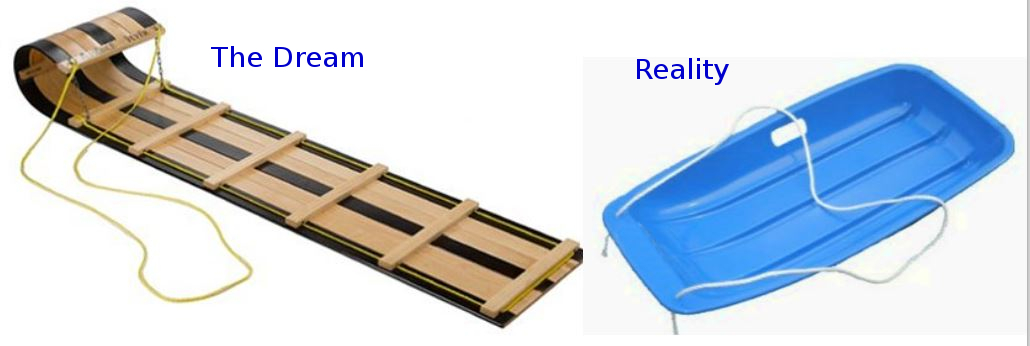 And in the earlier process, a fellow on another Free Givers site sent me the directions for making a sturdy one from a plastic barrel. I saw one (abandoned) across the road in weeds near a neighbor and asked if she wanted it. It was hers, and she gave it to us. So, if it is too narrow, she has offered she can get more, so we are going to request more. John can always use them to store water prior to a dry ditch in late summer. Tomatoes grow and produce later than, say onions and strawberries.
And in the earlier process, a fellow on another Free Givers site sent me the directions for making a sturdy one from a plastic barrel. I saw one (abandoned) across the road in weeds near a neighbor and asked if she wanted it. It was hers, and she gave it to us. So, if it is too narrow, she has offered she can get more, so we are going to request more. John can always use them to store water prior to a dry ditch in late summer. Tomatoes grow and produce later than, say onions and strawberries.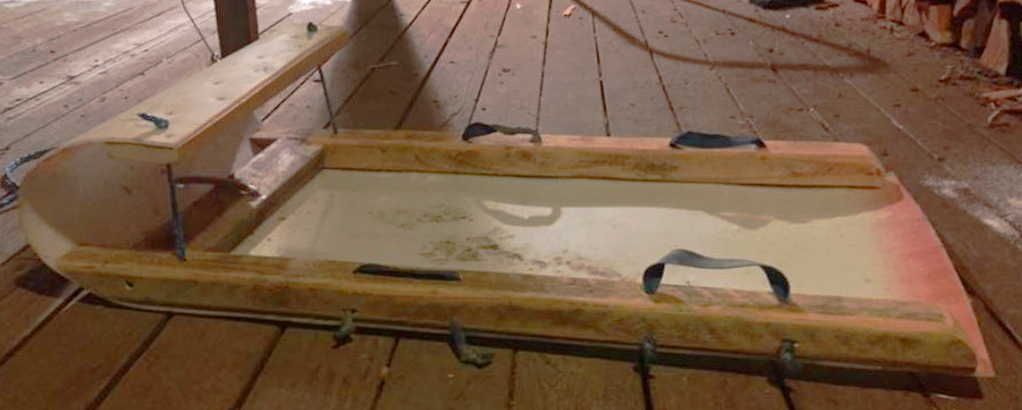 On our way home, we picked up the plastic barrel from our neighbor, Joanie. It is bright blue!
On our way home, we picked up the plastic barrel from our neighbor, Joanie. It is bright blue!
Friday, Jan 26
I started at CWU at noon with a visit to Barge Hall for our Scholarship Luncheon meeting. I visited, ate, and left for the senior center, where I was scheduled to be the volunteer photographer at the event for this 4th Friday of the month.
It was to be an Under the Sea “Shellabration”. Most of the participants had left. I was late arriving at 12:30, but it also ended sooner than most events. I got a run down on the events of the day and a serving of egg salad they saved for me. It was served on croissant rolls (because they look like shells). I did not take a roll.
They had blank name tags for those who wanted to be a Pirate or a Mermaid. Below are the pages, with columns, for the name creations. Pick one from each column, left if you are a pirate type, or from the right form if you are mermaid.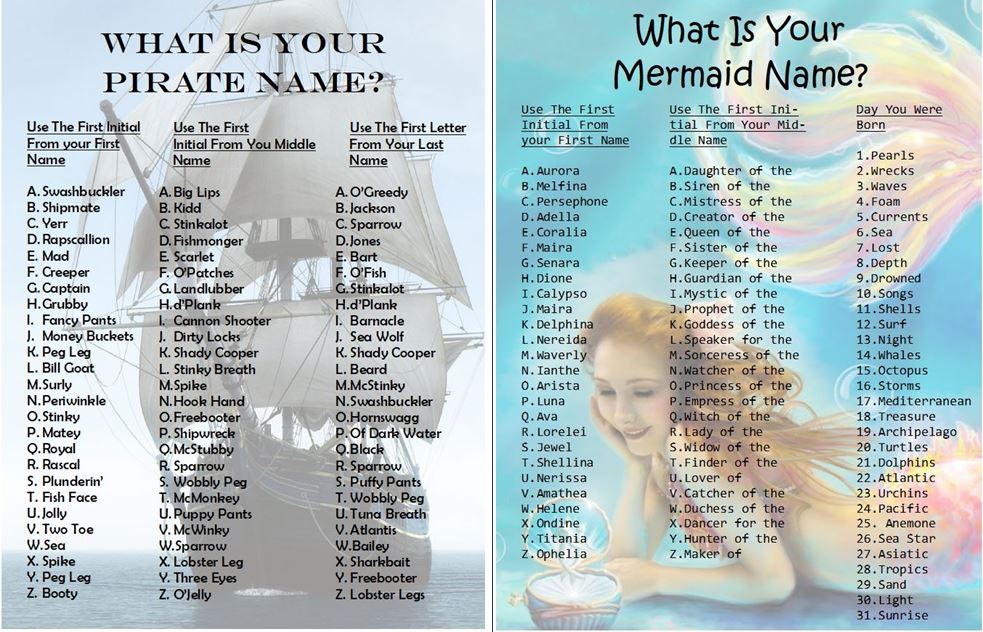 My mermaid name was Ianthe Siren of the Pearls. I guess if I used my real given initial for Lee instead of B for Brannen (the middle initial I use now), I would have been Ianthe Speaker for the Pearls.
My mermaid name was Ianthe Siren of the Pearls. I guess if I used my real given initial for Lee instead of B for Brannen (the middle initial I use now), I would have been Ianthe Speaker for the Pearls.
Then we followed up with pictures of me with two staff members:
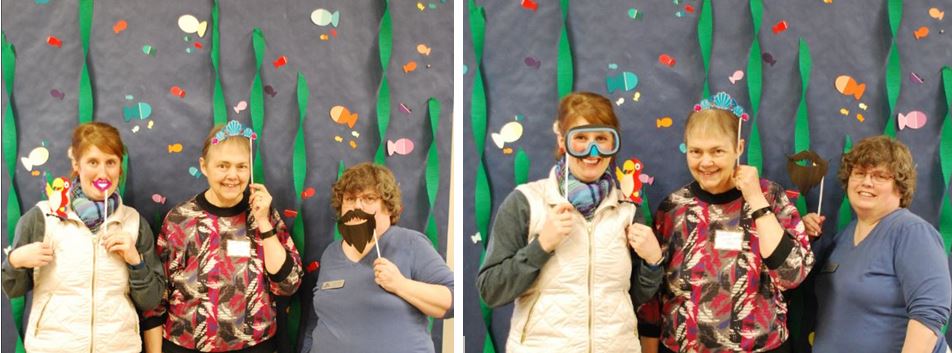 Katrina, Nancy, Elaine with props (parrot, lips, crown, beard, goggles). The attendees were able to have their photos taken in front of the wall hanging.
Katrina, Nancy, Elaine with props (parrot, lips, crown, beard, goggles). The attendees were able to have their photos taken in front of the wall hanging.
I stayed for our SAIL exercise class and got my workout.
Afterwards, I used the computer room for a few minutes and then drove to Super 1 to meet John, who had returned from taking 400 lbs of trash to the transfer station. The price has gone up this year; the cost was $21.41 [Fee is $103.35 + tax per ton]. That beats the pickup fee at the end of the driveway. A friend just put an extra bag out last week, and was charged an addition $5. Yikes. It must not have fit in the garbage can. Wonder if they’d left the top off, so the machine could pick up the can, if they’d have taken it without the added cost.
I drove John up to CWU campus and parked with my Emeritus parking sticker to save his paying $5 to park. (Parking lots are free after 4:30 p.m., so that works for night meetings only, not for 4:00 afternoon seminars.) I returned him to his truck afterwards, so he could rush home to feed the animals before it was totally dark. He got the mail and paper too.
Here is my documentation of the presentation.
First, is the location of the Cascade Crossroads Documentary presented in the Natural Science Seminar Series at CWU.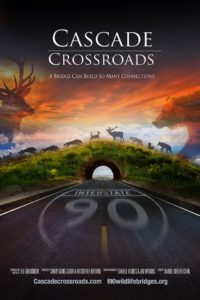 This image, being used in poster and postcard form to advertise the Cascade Crossroads Documentary film (30 min), was designed by Daniel Cohn. In the real world, the crossing bridge will have high sides so drivers/animals will not see each other. Also, there are East & West lanes using separate tunnels under long bridges on I-90. The film shows those too.
This image, being used in poster and postcard form to advertise the Cascade Crossroads Documentary film (30 min), was designed by Daniel Cohn. In the real world, the crossing bridge will have high sides so drivers/animals will not see each other. Also, there are East & West lanes using separate tunnels under long bridges on I-90. The film shows those too.
Be sure you pull the start back to the beginning on the YouTube link below:
Also, please view that above before you watch the comments below and they will be more meaningful. The questions and answers and comments are offered by the team who put the funding, research, and construction together. The video shows lots of folks from local, State, and Federal agencies.
The following three videos I captured from the next to the back row above an aisle in front of my seat. My purpose was to give the feedback back to the researchers. I did not see anyone from the University there videotaping, and I did not have a tripod or stand up to videotape the comments. There was a row of people behind me.
I was pleased to see many of my colleagues there and a number of students involved in the research. I was at the original meeting 10 years ago (in that room), that Professor Darda mentions in his introduction. Jason Smith was a Geography grad working then at WSDOT Environmental Management in Union Gap, WA.
(1) Introduction by David Darda, CWU Prof Biology
LINK A
(2) The film trailer with all involved in the documentary
LINK B
(3) This video consists of comments and Q&A part of the program and lasts 22 minutes. It was a discussion about the documentary with questions from the audience of all the representatives there who were previously introduced, mentioned in the film, or associated with the project and there in person.
LINK C
I drove John back to his truck, so he could get home before dark to feed the animals, and I continued on down to Burger King for the special price on two Crispy Chicken sandwiches so he wouldn’t have to cook dinner, and with it we shared the rest of the egg salad from the AAC I bought home in my own container.
We weren’t home until dark, and there was a message waiting from the Yakima Heart Center at 4:40 (late on a Friday), to return a call to the scheduler. I have no clue what is being scheduled. Maybe it is a meeting with the new Cardiologist I’m being assigned to, but I cannot find out until Monday. I want to research the one I’m assigned to before I meet with him or her. I met about 10 of them while in the ICU (Yakima Regional Hospital in 2009; I prefer an MD who knew me then).
Saturday, Jan 27
One of the coolest things that happened in my preparation for attending the Natural Science Seminar, was seeing so many of my former colleagues and students at CWU in the Cascades Crossroads documentary. Then yesterday to be there and see Aja Woodrow in person during and at the end, made it even more special. He and his wife Helen Lau, work for the forest service and were instrumental in the wildlife biology research for the documentary. Aja (pronounced ‘Asia’) and Helen were both students in my Intermediate GIS class, back in the day. I remember the class, the largest enrollment I ever had. So large, we had to have three computer labs scheduled to cover the hands-on learning, in addition to the lecture in a very large lecture room in the computer science building.
This morning I uploaded the videos from yesterday.
I searched for more information on an image in the documentary, of a wolverine climbing a structure. I learned that is a Run-Pole Station, used to capture hair (coat) to determine their DNA. My former student Aja, now a Wildlife Biologist with the Forest Service, and his wife Helen is a Zoologist with the FS in Cle Elum. She is a regular contributor to the jobs list serve I manage. I found these references below, and will stop my research now, so I can complete this week’s blog and get on the things I very much need to do, such as receipt filing and income tax preparation. I need to stay home long enough to carry through on cleaning and organization chores that don’t get done while I’m running all over town to activities.
Here is something else for you to see for background to the wildlife studies happening for the I-90 crossovers and crossunders.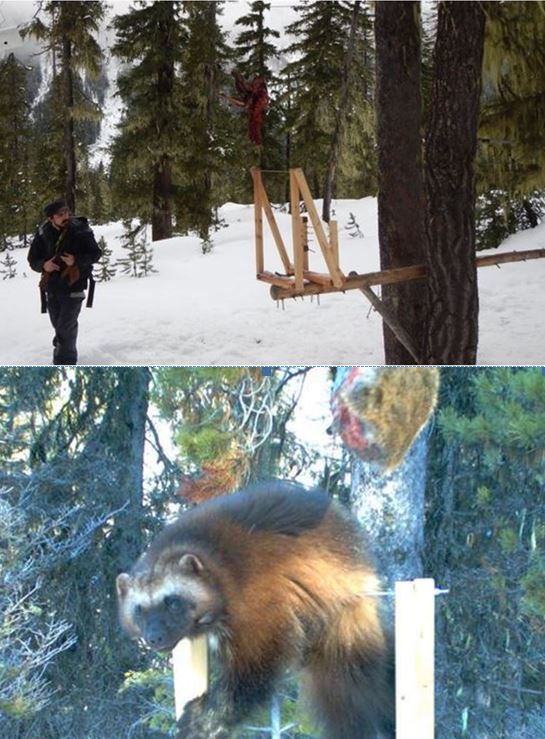 Top, Aja walking away from a set run-pole (meat from road-killed animals); bottom a visit from a wolverine is captured on camera. See the article for the reason for the camera picture of the face coloration for identity.
Top, Aja walking away from a set run-pole (meat from road-killed animals); bottom a visit from a wolverine is captured on camera. See the article for the reason for the camera picture of the face coloration for identity.
One last informative article before I leave this topic:
Wolverines Recolonizing in the Washington Cascades (presentation by Aja Woodrow, March 2016)
Read the article below for a description of the run-pole setup to gain information about the wolverines in the local region, through an interview with Aja Woodrow.
As an ending note, we, as Geographers, choose to include an interesting article on Paris –
It is Flooding, Again & Again, & … 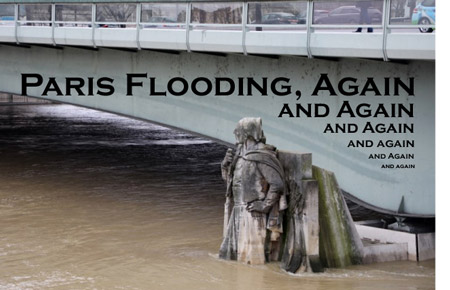
We had sad news this week. Nephew Eric called with information that his Dad, John’s older brother, died. He was 85. More later. Our best to wife Kit, and the entire family.
Hope your week was fine.
Nancy and John
Still on the Naneum Fan